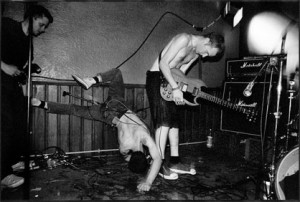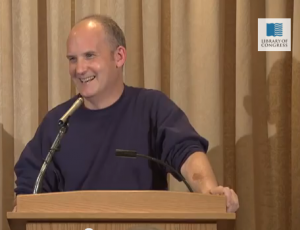Personal Digital Archiving and Punk Rock!
As the digital revolution progresses it becomes easier and easier to create various kinds of materials – text documents, images, web pages, audio and video recordings… How many of us have zillions of images and other media scattered hither and yon on our hard drives with incomprehensible names like Photo_1538.jpg and Movie23.mov and so on? I’m guessing we all do. In fact, as obsessive as I am with the materials in the Hampshire College Archives, my personal computer at home is, sadly, not as well organized as I would like.
Um… er… what was that file again??
Personal archiving is just what it sounds like – it is the methods and best practices that those in the business of the preservation of cultural heritage materials (institutions like the Library of Congress, the Smithsonian Museums and so on) have passed on to the rest of us so that we can preserve and find our digital materials into the future. The Library of Congress has an excellent guide to personal digital archiving here. (In the interest of full disclosure I should note that the sections on audio and video were written with significant input from Yours Truly.)
Broadly speaking, guides to personal archiving contain information like how to name your files so that, for example, Photo_12985.jpg sitting in a folder called “Untitled” becomes key_west_20120405.jpg sitting in a folder called “Key West 2012.” In this case the 20120405 would be April 5, 2012. File-naming conventions are INCREDIBLY important when it comes to finding materials later. Libraries, museums and archives use much more detailed and structured metadata (essentially “information that describes information”) but filenaming is the still the first – and possibly most important – step to keeping things findable in a repository. Without it, materials can be lost forever. And that is NOT good.
Personal archiving can also help you figure out which kinds of formats to save your digital information in so that it stands the best chance of being readable by software into the future. So for example you really might want to think about getting that important junior high school paper about Benjamin Franklin that you saved as a Word Perfect document saved as a PDF. And those Real Video files you’ve been clinging to? It’s probably time to transcode them to a more sustainable form of video.
Personal archiving also deals with where to save the materials. Saving every digital object you own to one hard drive may be convenient now but it’s not that convenient when the hard drive fails and you lose it all. (And don’t think that hasn’t happened to me – I lost all my footage from a video I made in film school when the hard drive just decided to grind to a halt and make the dreaded clunk..clunk.. sound. Now I make COPIES and put them on different drives in different places so that even if the house burns down I still have a copy of that all-important Beginning Video Production masterpiece.)
The Library of Congress recently hosted an event that featured Ian MacKaye, singer and guitarist from the legendary DC punk band Fugazi. Fugazi’s record label, Dischord Records, has reached back into their vaults to create an impressive online resource featuring live recordings from Fugazi. This Live Series webpage is an amazing example of preservation and online access. Making smart choices about the materials you create can help YOU create similar collections of your important documents, videos, audio materials, photographs and so on.
Fugazi as I remember them – yeah I’m that old!
MacKaye recently gave a speech at the Library of Congress about the need to inform creators of content (from filmmakers to musicians to photographers and just about everyone else) about basic steps to take to help ensure their digital materials will be both findable and preservable into the future. When you stop to consider how it easy it is to, say, make a movie nowadays (an iPhone is, among other things, a movie production and dissemination tool) as opposed to how HARD it was to make a movie 60 years ago, you can see the impending “digital deluge” of materials that libraries, archives and museums will have to sift through. A good way to help out cultural heritage institutions is to keep our materials in good order so that we can find them and play them back and so that THEY can preserve them and keep them accessible should we choose to donate the materials. MacKaye’s speech (given to a standing-room-only crowd) is a great example of a very important and prolific creator doing outreach about personal archiving. This speech can be found on YouTube here.
MacKaye speaking recently at the Library of Congress
I could go on and on about the importance of personal archiving. And I’m always happy to! If you have questions about the preservation of your own materials (be they school materials, personal materials or whatever), you should feel free to drop by the Archives on the third floor of library or send me an email – jljones@hampshire.edu. I’m always happy to give thoughts!



